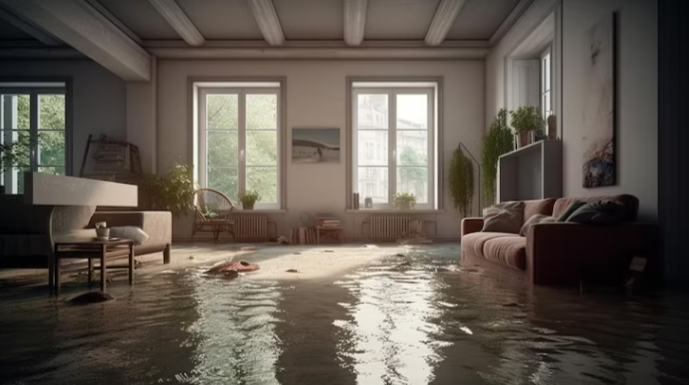Discovering water damage in your home can be a distressing experience. Whether it’s a burst pipe, a leaky roof, or flooding from external sources, the aftermath can leave behind a trail of destruction.
However, with a systematic approach and timely intervention, you can effectively restore your living space and prevent long-term issues.
This guide outlines the essential steps to take when faced with water damage, helping you reclaim your sanctuary.
Immediate Actions: Safety First and Damage Assessment
Your initial response is crucial in mitigating further damage from a one-time water damage event. Prioritize safety by turning off the main water supply and any affected electrical circuits. Avoid direct contact with standing water if there’s a risk of electrical hazards.
Once safe, document the damage with photos and videos for insurance purposes, capturing the immediate aftermath of this isolated incident.
Assess the extent of the water intrusion, noting the specific areas impacted by this singular occurrence and the type of water (clean, gray, or black), as this will influence the necessary restoration procedures tailored to this event.
Contact your insurance provider immediately to report the damage from this specific incident and understand your coverage for this type of event.
Water Extraction and Drying: Preventing Mold Growth
The next critical step is to remove all standing water as quickly as possible. Utilize pumps, wet/dry vacuums, and mops to extract the water from floors, carpets, and upholstery.
Following water removal, thorough drying is paramount to prevent mold growth, which can begin within 24-48 hours.
Employ dehumidifiers and fans to circulate air and draw out moisture from walls, ceilings, and floors. Open windows and doors if the outdoor humidity is lower than inside.
For significant flooding, professional water extraction and drying services are highly recommended as they possess specialized equipment and expertise.
Cleaning and Sanitization: Addressing Contamination
Once the affected areas are dry, meticulous cleaning and sanitization are essential, especially if the water was contaminated (gray or black water).
Hard surfaces should be scrubbed with a disinfectant solution. Porous materials like carpets, upholstery, and drywall that have been saturated with contaminated water may need to be professionally cleaned or, in severe cases, removed and replaced to prevent health hazards.
Pay close attention to areas where moisture may have seeped into, such as behind walls and under flooring.
Repairs and Reconstruction: Restoring Structural Integrity
After the cleaning and drying process, focus on repairing any structural damage. This may involve replacing damaged drywall, insulation, flooring, and baseboards.
Address any plumbing or roofing issues that caused the initial water intrusion to prevent recurrence. Depending on the extent of the damage, you may need to hire contractors for specialized repairs.
Ensure all repairs are done to code and that the affected areas are structurally sound before moving forward with cosmetic restoration.
Mold Remediation: Ensuring a Healthy Environment
Even with thorough drying, mold can sometimes develop. If you detect visible mold growth or notice a musty odor, it’s crucial to address it promptly and professionally.
Mold remediation involves identifying the type of mold, containing the affected area, removing the mold growth, and addressing the underlying moisture issue to prevent future growth.
Improper mold removal can release spores and exacerbate the problem, so hiring certified mold remediation specialists is often the safest and most effective approach.




